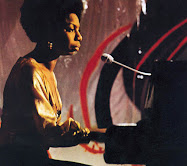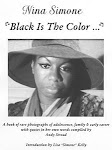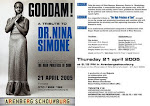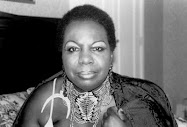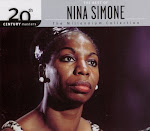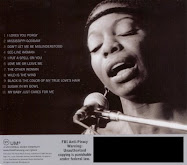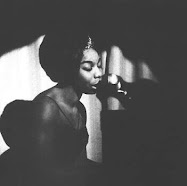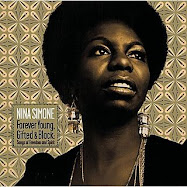Love God with all your heart
-
Click the picture for a Sunday musical playlist, love God with all your
heart all day every day!! - -
Thursday, December 4, 2025
Wednesday, December 3, 2025
Herbie Hancock: Possibilities
-
-
A rare and true icon of modern music, Herbie Hancock continues to bring audiences new and inventive visions of music. In August 2005, the Possibilities album was released, featuring the collaborative talents of a legendary lineup of artists. The film, Herbie Hancock: Possibilities, showcases this musical project in development and design, as Herbie interacts with artists such as Christina Aguilera, John Mayer, Paul Simon, Annie Lennox, Sting and others. A leader of musical innovation, Herbie explores the creation of fresh music through collaboration and expansion upon his and others’ experiences, and what results is a collection of poignant musical imprints.
Wednesday, November 26, 2025
Thursday, November 20, 2025
Wednesday, November 19, 2025
Sun Ra - A Joyful Noise
--
Robert Mugge filmed jazz great Sun Ra on location in Philadelphia, Baltimore, and Washington, D.C. between 1978 and 1980. The resulting 60-minute film includes multiple public and private performances, poetry readings, a band rehearsal, interviews, and extensive improvisations. Transferred to HD from the original 16mm film and lovingly restored for the best possible viewing experience.
Sunday, November 16, 2025
The Great Wide World of Quincy Jones
--
Ray Charles, Frank Sinatra, Patti Austin, Sarah Vaughn, and Michael Jackson are just some of the recording artists with whom mega-producer and arranger Quincy Jones has created music in his illustrious 60+ year career. Known to many simply as ‘Q’, he has received 28 Grammy Awards, including the Grammy Legend Award, and has been a major force in almost every style of music and entertainment!
Maestro Singleton has gone on record many times, stating Quincy Jones is the most important musician of our time. His mastery of musical styles ranges from jazz and R&B, Brazilian and pop, and everything in between. On October 13, 2018, your CJO, featuring guest vocalist Quiana Parler, dove into Quincy Jones’s repertoire and performed some of his most notable compositions and arrangements.
Wednesday, November 12, 2025
New Standard Time: The Great American Songbook - Nnenna Freelon and your...
-
-
The Great American Songbook – Nnenna Freelon and the Charleston Jazz Orchestra
Originally performed live on January 18, 2018
Nnenna Freelon and the Charleston Jazz Orchestra kicked off the 4th Annual Charleston Jazz Festival with their performance of NEW STANDARD TIME: The Great American Songbook. As a six-time Grammy Award nominee, Nnenna has earned a well-deserved reputation as a compelling and captivating live performer. In 2014, Nnenna starred in the critically acclaimed show “Georgia on My Mind: Celebrating the Music of Ray Charles” at the Venetian Hotel in Las Vegas. Nnenna is no stranger to the music of Ray Charles, as she toured with him, as well as many other great jazz artists, including Ellis Marsalis, Al Jarreau, George Benson, and others.
Saturday, November 8, 2025
Friday, November 7, 2025
Nnenna Freelon | Shaped by Sound
-
-S2E4: Let Us All Be Windows w/Nnenna Freelon
In a deeply intimate conversation, Stone Written host Dr. Rhon (@DoctorRMB) sits down with Grammy-nominated American jazz vocalist Nnenna Freelon to discuss her new book and album, exploring how jazz improvisation, deep listening, and ancestral presence shaped her journey through loss.
They reflect on grief’s non-linear nature, the healing power of creativity and community, and the ways memory, music, and everyday rituals open pathways from sorrow to hope.
Nnenna Freelon, born July 28, 1954. Freelon was born Chinyere Nnenna Pierce to Charles and Frances Pierce in Cambridge, Massachusetts. She has a brother, Melvin, and a sister named Debbie. As a young woman, she sang extensively in her community and the Union Baptist Church and at St. Paul AME. She recalled, "I started singing in the church, like so many others...."Nnenna graduated from Simmons College in Boston with a degree in health care administration. For a while, she worked for the Durham County Hospital Corporation, Durham, North Carolina.
In 1990, Nnenna Freelon went to the Southern Arts Federation's jazz meeting and met Ellis Marsalis. "That was a big turning point. At that time, I had been singing for seven years. Ellis is an educator, and he wanted to nurture and help. What I didn't know at the time was that George Butler of Columbia Records was looking for a female singer. Ellis asked me for a package of materials. I had my little local press kit and my little tape with original music. Two years later, I was signed to Columbia Records." She was in her late 30s when she made her debut CD, Nnenna Freelon, for Columbia in 1992. The label dropped her in 1994, and Concord Records signed her in 1996.
In 1979, she married architect Philip Freelon. She and her husband raised three children, Deen, Maya, and Pierce, before she decided to perform professionally as a jazz singer. Their son, Pierce Freelon, is a hip hop artist, a Visiting Professor of Political Science at North Carolina Central University, and the founder of the website Blackademics, for which he has interviewed many notable figures such as Angela Davis, Maya Angelou, Nikki Giovanni, and Jesse Jackson. Deen Freelon is a Presidential Professor in the Annenberg School for Communication at the University of Pennsylvania, studying social media and politics. Daughter Maya Freelon Asante is a visual artist.
Nnenna Freelon's special instrument
Dianne Reeves, Nina Simone Band, Simone & Lizz Wright - Full Concert | L...
-
Sing the Truth is a tribute to the musical heritage of one of the greatest jazz divas of our time, Nina Simone. She died in 2003 at the age of 71. The tribute to her name that was organized a year later became a remarkable project that was only performed in a few places. Three great jazz vocalists, Dianne Reeves, Lizz Wright and Nina's daughter Simone, will pay homage to her work, together with the original Nina Simone Band. The orchestra is led by Al Shackman, the band leader who accompanied Nina for 41 years. Special guest will be Bob Dorough on piano. The repertoire will stretch from Ne Me Quitte Pas to Four Women. Especially that last song will impart in four couplets the impressive artistic scope of Nina Simone.
Thursday, October 23, 2025
Wednesday, October 22, 2025
Alice Coltrane - Song Of The Underground Railroad (Jazz Jamboree, 1987)
Alice Coltrane performing 'Song Of The Underground Railroad' at international jazz music festival Jazz Jamboree in Warsaw, Poland in 1987.
Piano, Harp – Alice Coltrane
Saxophone – Ravi Coltrane
Drums – Roy Haynes
Contrabass – Reggie Workman
Subscribe to:
Comments (Atom)































